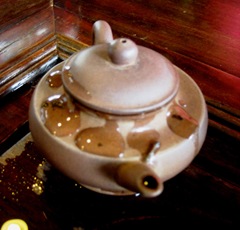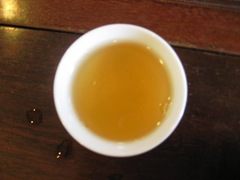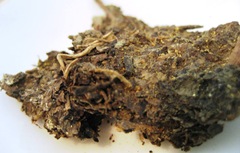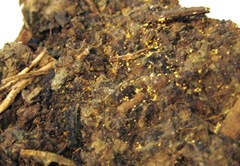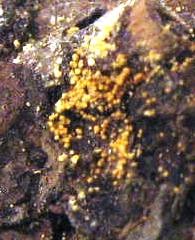“It lowers blood pressure, regulates energy and appetite, eliminates bad cholesterol, prevents and/or cures cancer, helps prevent tooth decay….” The claims about the health benefits of tea often cross into non-approved and unproven uses. The US FDA took action against many websites that popped up over the past few years claiming that miraculous Wulong tea guarantees weight loss, cures heart disease and lowers cholesterol.
Tea has been said to have a lot of health effects and I believe this is true. I think that chief among these benefits it that tea’s pleasant nature can bring calm and contentment into our lives (which in turn can bring a whole slew of other positive mental and physical effects).
I hear a lot, for example, about how dried tea leaves can be made into pillows that help eliminate problems with high blood pressure. I am curious as to what mode of transmission would cause dry, previously-infused tea leaves that are stuffed into a cloth case to release special properties that, when slept upon, would lead to a statistically significant reduction in blood pressure. If a person with normal blood pressure or even slightly low blood pressure were to, for some reason, sleep on such a pillow, would their BP drop down to an unhealthy or dangerously low level? Early on in my tea studies, I helped a friend collect used tea leaves to make pillows with. We dried pounds of it in the California sun and stuffed them into pillow cases that we sewed shut. I slept on one on-and-off for a few weeks and found it to be very uncomfortable. I envisioned that it would be cooling and supportive like the buckwheat hull pillows that were all the rage back then, but no, these tea pillows were jagged and the crunchy noises frequently woke me. After a few weeks, the moisture (humidity? sweat? drool?) that had found its way back into the tea leaves did not create a pleasant aroma of wonderful oolongs, but a stale odor. The darkness, heat and moisture also created issues with mold. Tea pillows for sleeping on? Can’t say I recommend it, but your mileage may vary.
Tea has helped me to reduce my high blood pressure in a different way during stressful times in my career. However, I cannot say that it was the beverage itself that led directly to the reduction. The process of having to slow down and relax as I prepared and consumed tea, the “therapy” of being able to share my troubling thoughts with tea friends, and a general change in my dietary habits were key factors. To say that the tea alone cured my ailment would be misleading.
Benefits aside, I have read several studies regarding a link between tea consumption and esophageal cancer (source link). The root problem, however, shouldn’t be the tea itself, but the high temperature of the tea that was consumed by the study subjects. Repeated overly-hot beverage or overly-hot food consumption has been shown in several studies to highly correlate with gastro-intestinal tract damage.
I also continue to read and hear a lot about tea and caffeine. #1: “White tea has the least caffeine and black tea has the most. Pu’er tea is fermented, so it has no caffeine.” #2: “Dumping the first infusion of tea will eliminate the majority of the caffeine in its leaves.”
Both statements are incorrect, and the scientists who study this kind of stuff have proven the wrongness. White tea is minimally processed and has quite a bit of caffeine. A green/sheng/raw pu’er cake can also have a lot of caffeine; even an aged one may have quite a bit. If you take a white tea or a green pu’er cake and brew it in a big pot with boiling water, then proceed to dump the first pot but drink the next 4, you will certainly feel the effects of the caffeine (unless you are a cool mutant who is immune – which does happen).
If many online sources are to be believed, dumping the first brew will eliminate 80%+ of the caffeine; that is simply not true (unless, as the studies show, the tea is brewed for over 5 minutes). Nigel Melican is a respected tea consultant and a defender of tea facts. He does a great job disseminating scientific sources to show that some of the conventional wisdom surrounding tea is quite wrong. This Cha Dao blog article from 2008 is well written and helps dispel some of the myths that continue to circulate. Read through the comments to see just how much debate was generated (and it continues on/off on Twitter!). Certainly it can reasonably be said that more research is necessary, but at this time, I can find no credible study of tea using scientific methods that has determined that white tea consistently has the lowest level of caffeine, or that a normal 30-60 second infusion will eliminate the majority of caffeine in the leaves.
I once believed, for years, that white tea had no caffeine and I brewed it for my grandma weekly. Every time I did so, I’d think she was bonkers the next morning when she swore that the tea kept her awake for at least a part of the night. Nonsense, it’s white tea, it has no caffeine! Alas, I was very wrong. There is no shame in being corrected, but there is when one continues to advocate nonsense (my poor granny!).
At the end of the day, whether we have our facts right or wrong, it’s really what’s in the cup that should matter most. If it tastes good, drink it and enrich your life. But maybe not before bedtime. And you might want to let it cool down a bit, too.
